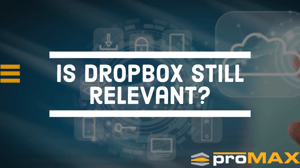Introduction
Dropbox is a cloud-based file storage and sharing service. It allows users to upload files of any size from their computer, and then access those files from other computers, mobile devices, and web browsers. This allows you to keep your files in sync across multiple computers, which is especially useful if you use more than one computer day-to-day.
Dropbox is a cloud-based file storage service.
Dropbox is a cloud-based file storage service that allows you to store your files in the cloud and access them from anywhere. It’s also a file-sharing service, which means it acts as an intermediary between multiple users so that they can share files with each other.
There are two ways to use Dropbox: as a file syncing service or as a file sharing service. If you’re only interested in storing data on your computer but not sharing it with others, then you would likely be better off using another tool like Google Drive (which is similar to Dropbox). But if you want the ability to share files with other people or keep track of multiple versions of documents or images over time then Dropbox is probably what you need!
You don't need to pay for Dropbox, but you may want to.
The free version of Dropbox is limited. You’re allowed only 5 GB of space, which isn’t enough to store many files at all. If you would like more storage space, then you will need to pay for it.
There are several different options for paying for additional space on your account:
- You can pay monthly or yearly for more storage in increments of 100 GB as needed - so if you have a lot of photos or videos that need storing, this could be the best option for you.
- If you have a team and would like them all working from the same place (say a group project), then paying per person might work better than paying by the month.
- If some members of your family don't use much data but others do, then splitting up into family plans may make sense here too!
There are other services like Dropbox out there.
There are other services, like Google Drive and OneDrive, that offer more storage space at a lower price. If you're considering another cloud-storage solution, make sure to do your research before committing. To learn more about Google Drive, check out our blog Google Drive Backup and Sync: Everything You Need to Know.
Some things to consider:
- What types of files do I need to store? For example, if you have a lot of high-resolution photos or large video files then Dropbox might not be right for you.
- Do I want easy access to my files from any device? Many people use Dropbox as their primary file backup and sync it with multiple devices so they can access their data anywhere at any time. If this isn't important for you then there's no reason why another service wouldn't be just as good!
Dropbox is useful in managing and sharing large files on the go, but it's still not perfect.
- You can't use Dropbox without an internet connection. If you're traveling and have no reliable Wi-Fi access, you'll need to find another way of backing up files.
- Dropbox isn't really intended for small files like photos or receipts—the free version only gives you 2GB of storage space per account and 100MB per file (which can add up fast). If you need more space than that, paying $9.99 per month gets you 1TB (1,000GB). This is probably more than most people need right now; however, if your needs grow over time then having a lot of space available would be important to consider when choosing a provider for your cloud storage needs.
It has a lot of features that make it easy to share files with others, and it's especially useful for teams who want to collaborate on projects. But Dropbox isn't the only game in town anymore, as more companies are coming out with competing products that have similar features and operate in similar ways. Be sure you're comparing apples to apples when choosing what file-sharing software is right for your needs.
Conclusion
Dropbox is still a great service, but it has some limitations and competitors. While it's easy to get started with Dropbox, there are some downsides that you should be aware of before committing to using this service for your business or personal files. The biggest downside is that you need an Internet connection to use Dropbox, which means you can't access files when there's no Wi-Fi available. Another drawback is that if someone else has access to your account (whether through sharing permissions), they could delete files or change permissions without your knowledge unless they have been specifically blocked from doing so by you or another user in charge of managing the group folder where those changes would be made.


